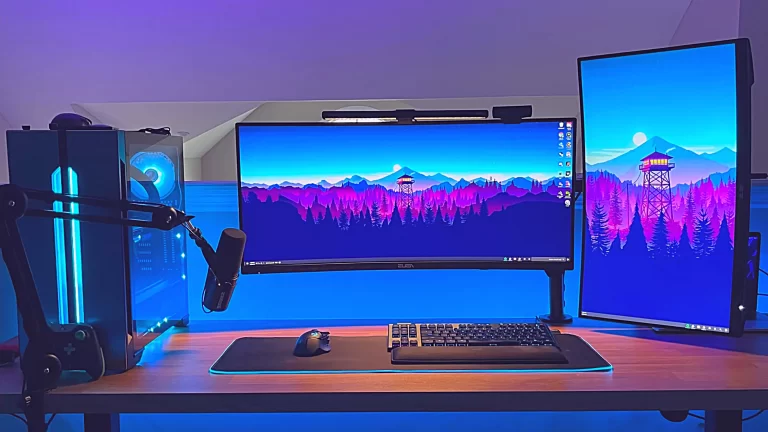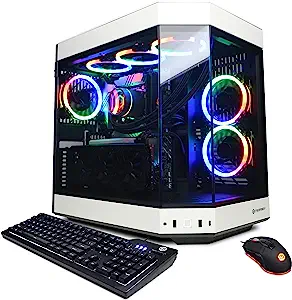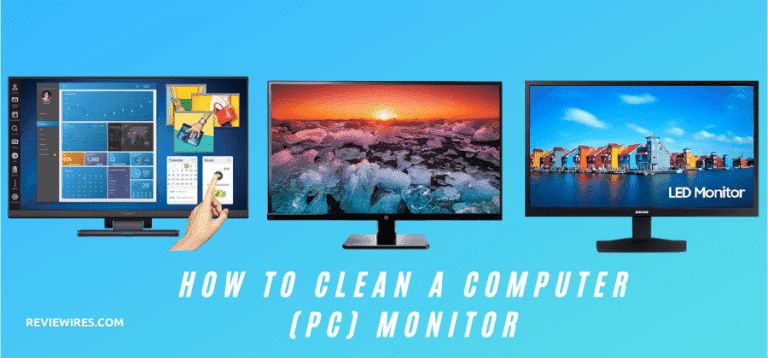Which is Better for you, A TV or A Monitor?
A TV and a computer monitor are both screens that can perform similar functions. However, while each device can do the same job as the other, TVs and computer monitors have their own unique capabilities.
Moreover, to choose between the two, you must first know their distinctions and characteristics. You must also be aware of your own wants and preferences to select what is truly appropriate.
Adding further, you can select a high-definition TV and monitor, which are ideal for gaming and viewing movies. Price, usefulness, and size are the key distinctions.
Further, a movie buff in need of a new display. However, we understand if the TV vs. Monitor debate for movies has left you all confused. This is a difficult question. There’s coding, work, gaming, editing, and so much more, and you’re not sure whether you should buy a TV or a monitor.
TV vs Monitor
Don’t worry, we’ve got all the facts and figures you’ll need to decide whether a monitor or television is the best option. Moreover, before learning the difference between monitor and TV, let us know it individually.
you can visit: FreeSync vs G-Sync to learn more about such differences.
MONITOR
A monitor is a part of PC hardware that displays the video and illustrations produced by the computer’s video card. A monitor is comparable to a television set. Previously, monitors were created using a cathode ray tube to render the video image. Further, the key goal in designing the monitor was to ensure that the image was accurate and stable. Thin Film Transistor Liquid Crystal Display (TFT-LCD) with LED Backlighting is now used to make the monitor.
Some of the features of a monitor are given below:
Features of a Monitor
- Size: The monitor isn’t much bigger. Because monitors are utilized from a specified distance, having a monitor that is too large would be quite inconvenient. However, large-screen monitors are ideal for gaming since they provide the illusion of the viewer moving away from their position.
- Viewing Angle: The monitor has a viewing angle of about 110 degrees.
- Resolution: The screen’s resolution diminishes as the screen’s size grows larger. The sharpness of a given image can be defined as resolution. Displays with a resolution of 3840 by 2160 pixels are now available.
- Power Saving: The monitor’s life is extended as a result. It allows you to switch off a monitor after a certain amount of time has passed without being used. This also helps to prolong the battery’s life and reduce wear.
- Accessories: Many monitors come with accessories or built-in connectors. As these devices are now incorporated into the display, there is no need for a separate hub, camera, microphone, or pair of speakers.
- Ration: The aspect ratio of a standard display is 4:3.
- Touch Screen: Touch may be detected at any pressure level, and the monitors can also detect rotations and tilts.
- Curved Display: These curved displays provide a more comfortable viewing angle. These are appropriate for both gaming and office work.
- Image Quality: The laptop produces more realistic and sharp graphics.
TELEVISION (TV)
Televisions are electrical devices that are used to view video content. Televisions receive broadcast signals and convert them into images and sound. However, these televisions are now manufactured in gigantic sizes, and as the size of the TV increases, so does the cost. The radiofrequency tuner and the audio speaker are joined with the monitor to produce television, and the resulting appliance is a television.
Moreover, the radiofrequency tuner aids in the reception of television signals via various techniques, including cable television, broadcasting, and satellite dish systems. Both audio and visual signals are carried over the RF. Additionally, the image tube receives the audio signal for display, which is transferred to the speakers. Further, the television also features a tuner or remote control that may be changed to change the channels, increase or decrease the volume, and so on.
Some of the features of television are given below:
Features of a television
- Size: Televisions come in various sizes, but buyers prefer large-screen TVs because they have better visibility and cover a broader area and angle.
- Ratio: Televisions were constructed squarely, with a 4:3 aspect ratio. Since HDTV has become the industry standard, TVs are now designed in a rectangular shape, resulting in a 16:9 aspect ratio.
- Image Quality: TTelevisions are designed to provide a better watching experience. As a result, the images broadcast on television are more lifelike. As a result, the image appears more lifelike.
- Resolution: Because of its size, a television’s resolution is lower. The resolution of 4K and 8K TVs will be good, but not as good as 4K and 8K displays.
- Refresh Rate: The television refresh rates and frame rates are poor.
- Viewing Angle: Televisions have a broader viewing angle, and one can see them from any angle because their viewing range is 160 degrees.
TV vs. Monitor – Which one is better in different aspects
SIZE:
When it comes to size, televisions are unquestionably the victor. Models ranging in size from 19 to 85 inches, and even larger, are available. The majority of them have a 16:9 aspect ratio. Monitors, on the other hand, range in size from 15 to 50 inches. Computer monitors are typically much smaller than most modern television sets.
RESOLUTION:
In comparison to most TV sets, computer monitors offer significantly higher resolutions.
BUILT-IN SPEAKERS:
TV sets feature built-in speakers, whereas computer monitors sometimes do not.
TUNER:
A tuner is not found on computer monitors, but it is found on television sets.
INPUT OPTIONS:
Computer monitors have a restricted number of input connectors, whereas television sets have many.
GAMING:
Monitors have less input lag, faster response times, and better refresh rates than televisions. They’re more responsive, and you can play competitive console games with them. Furthermore, monitors are a great investment if you want to play both PC and console games. On the other hand, TVs are typically larger and more affordable, making them more suited to gaming in vast spaces.
Frequently Asked Questions
Can we use a TV as a monitor?
You can; however, a VGA-to-HDMI adaptor may be required.
If you want to know how to convert a monitor into a TV then visit:How to convert a monitor into a TV.
Why is a TV cheaper than a monitor?
Because TVs are acquired in larger quantities than monitors, so it is easier to sell them for a profit.
Are monitors better for gaming than TV?
Compared to televisions, monitors feature less input latency, faster response times, and better refresh rates.
Are monitor screens better or TV screens?
Televisions have fewer pixels per inch than monitors. This means they can display extremely fine detail, which is particularly beneficial when working with text.
What is better for entertainment?
In short, those who want to watch many movies and television will benefit from having a television. Moreover, a monitor is far superior to a computer for both work and play, and it is unquestionably the best option for gaming.
CONCLUSION
We can conclude that there are numerous differences between a TV and a monitor, and the decision between the two is largely based on the type of information you’ll be seeing. However, before buying, know what you want the screen to do and how you want to use it before you decide which one to buy.
Do you wish to engage in some video game action? Do you have a living room where you may watch your Dish cable? On a big screen, use Photoshop. However, which is better, a monitor or a TV, depends on what you need.
If you want to buy or know about more displays with their specifications, then you can visit: Best monitors for Nintendo Switch.






